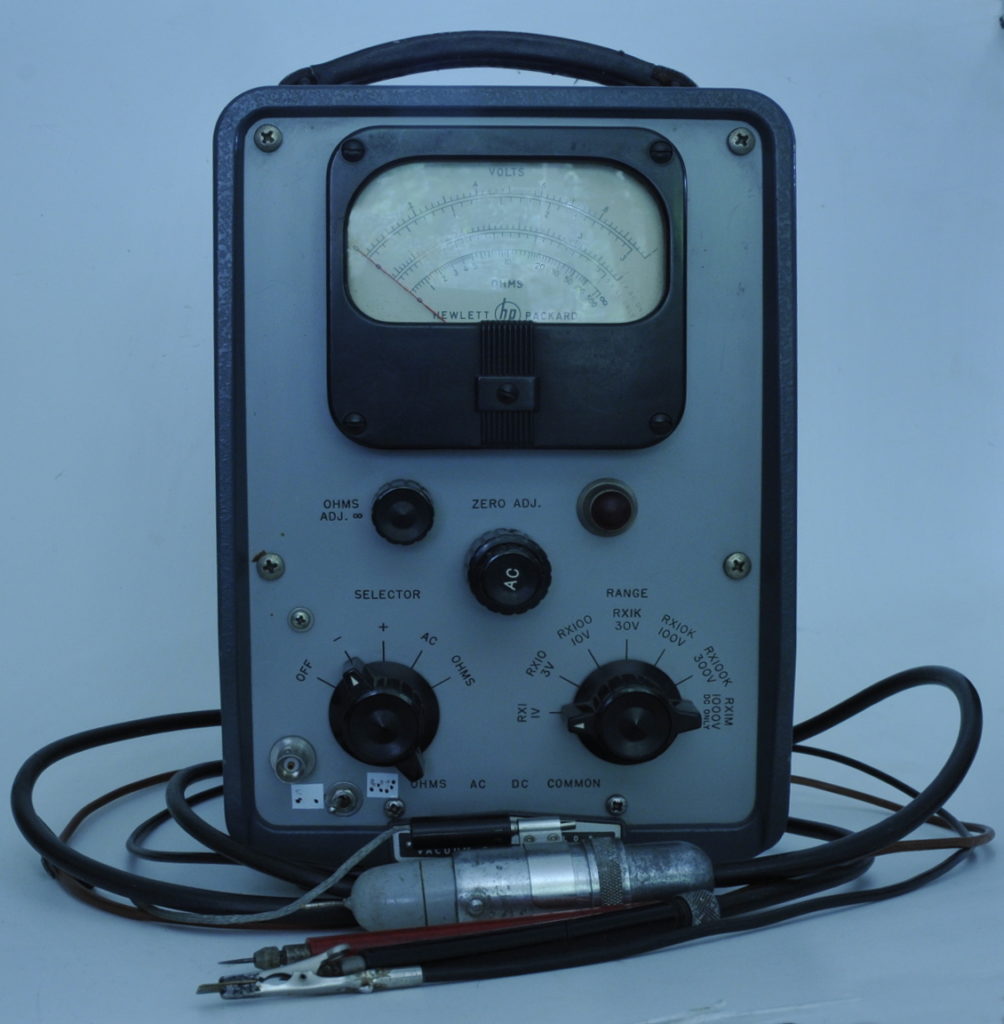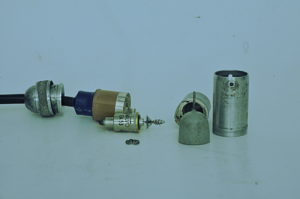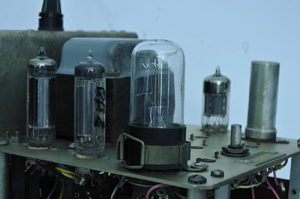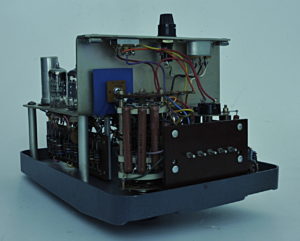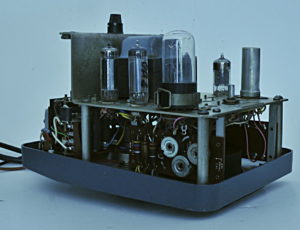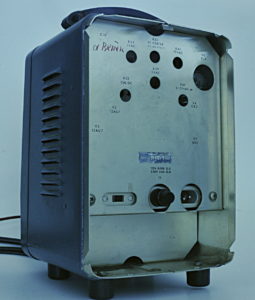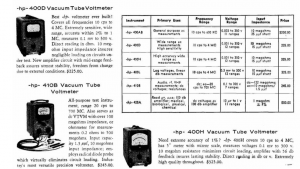This VTVM is usable upto 700 MHz and with a given correction up into the GHz range.
It was at the time of design one of the best benchmeters. That was the 410A, the competition was the GR-1800A that I also own. The 410B was much later. Mine is from 1968. At that time the first digital meters popped up, look at my Philips PM2420 nixie see: http://www.pa4tim.nl/?p=5917 After the B they made a 410C.
Looking at it with 2017 glasses on it is kinda portable, but back then it was. It has a carry strap on top (real leather) and you can disconnect the probes (with a screwdriver) and stow them away under the lid on the back. It has 4 testleads. Black with crocodile clip for ground. (like a scope it is safety ground referenced), black with probe for DC voltage, Red with probe for resistance and an “egg” for AC. This contains a diode tube. The coax on the front is not original.
The advantage of a VTVM was its high impedance. This one is 122Mohm. Now not a shocking value, most benchmeters now have 1 or more ranges that go over 1 Gohm. Back then the average analoge meter had an impedance given in 20-kohm/volt.
The passive analoge meters needed current to deflect so they used resistors to scale that. So the higher the voltage the more they had to scale the current down. Ergo, the higher the voltage range, the higher the impedance of the meter.
An example: for a 1mA metermovement you need 1000 ohm at 1V to get a full scale reading. The impedance is in this case 1 kohm/V. For 100V full scale you need 100k and 100KOhm/100V and that is 1 KOhm/Volt.
The VTVM was an active meter. In short: a voltage on the grid of a tube causes a current through the tube. This current is feed to the meter. In an analog passive meter the current came from the source you measured and you do not want that “leakage”
